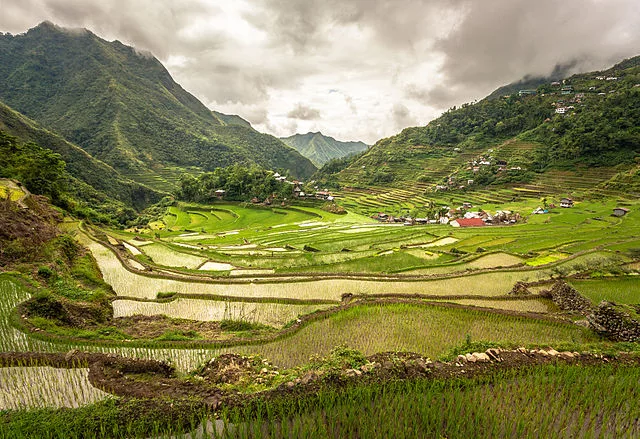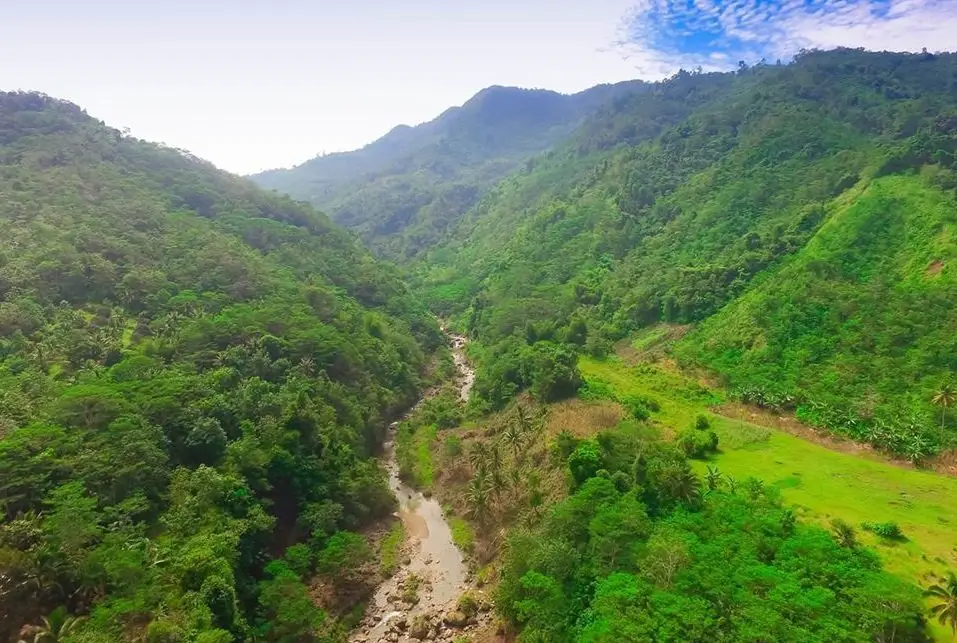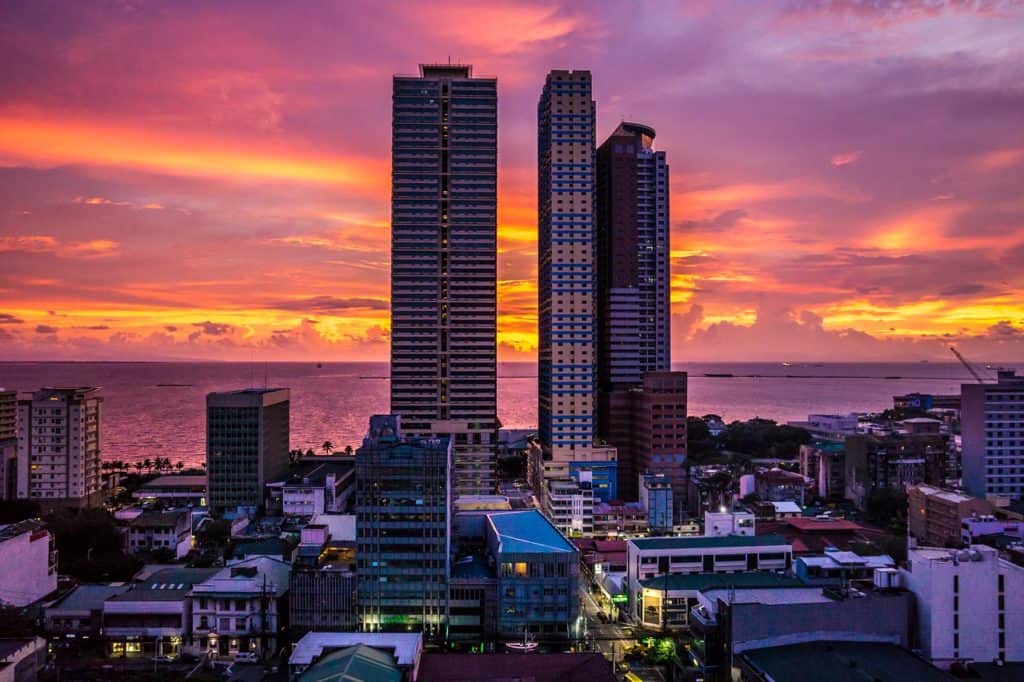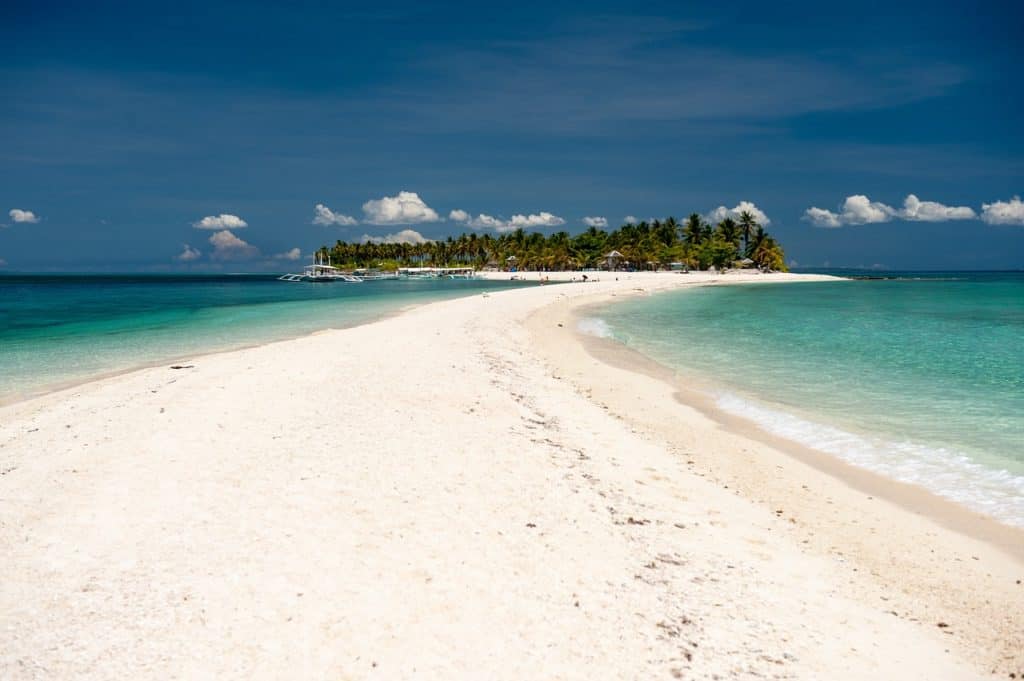
Table of Contents
Plateau in the philippines, The Philippines is a country that is known for its beautiful landscapes, rich culture, and friendly people. However, there is one aspect of the Philippines that often goes overlooked: its plateaus.
A plateau, in geological terms, is a flat-topped area of land that is elevated above the surrounding terrain. The Philippines is home to a number of plateaus, each with its own unique characteristics and history.
One of the most notable plateaus in the Philippines is the Cordillera Central, which stretches across the northern part of the country. The Cordillera Central is home to a number of indigenous tribes, each with their own distinct culture and traditions. The Ifugao people, for example, are known for their intricate rice terraces, which have been designated as a UNESCO World Heritage site.
Another notable plateau in the Philippines is the Bicol plateau, located in the southern part of the country. The Bicol plateau is known for its active volcanoes, including the famous Mayon volcano, which is considered one of the most active volcanoes in the Philippines. The Bicol plateau is also home to a number of hot springs and geysers, which are popular tourist destinations.
While the plateaus of the Philippines are often overshadowed by the country’s beaches and tropical forests, they are no less deserving of attention. These elevated regions are home to unique cultures, diverse wildlife, and geologically interesting landforms. It would be worth visiting and exploring these plateaus, as they offer a different perspective of the Philippines.
Unveiling the Plateaus of the Philippines: A Geographical Exploration
The Philippines, with its archipelago of over 7,000 islands, boasts a diverse landscape sculpted by volcanic activity and tectonic forces. Among these landforms, plateaus hold a unique charm, offering stunning vistas and fertile grounds. Let’s embark on a geographical journey to discover the hidden gems of the Philippines – its majestic plateaus!
1. Plateau Delights on a Philippine Map:
Imagine tracing your fingers across a map of the Philippines. Notice the elevated regions, often nestled amidst mountains or bordering the coast? These are your plateaus, beckoning exploration.
2. Location, Location, Location:
The Philippines boasts several prominent plateaus scattered across its islands. Here are some noteworthy examples:
- Benguet Plateau (Luzon): Home to the Banaue Rice Terraces, a UNESCO World Heritage Site, this cool and misty plateau offers breathtaking scenery and rich cultural heritage.Opens in a new windowwww.flickr.comBenguet Plateau, Philippines
- Bukidnon-Lanao Plateau (Mindanao): This extensive plateau in north-central Mindanao is known for its fertile agricultural lands and diverse ecosystems, including the majestic Mount Apo, the highest peak in the Philippines.Opens in a new windowwww.vigattintourism.comBukidnonLanao Plateau, Philippines
- Benham Rise (Underwater Plateau): This massive underwater plateau east of Luzon is a recent discovery, still shrouded in mystery. Studies suggest it could harbor valuable marine resources and hold clues to the region’s geological history.Opens in a new windowzh.m.wikipedia.orgBenham Rise, Philippines
3. Counting the Crowns:
While the exact number of plateaus in the Philippines can vary depending on definitions and classifications, we know there are several dozen notable ones scattered across the archipelago. Each plateau adds its own unique character to the country’s diverse landscape.
4. Unveiling the Plateau Secrets on Wikipedia:
For a deeper dive into the world of Philippine plateaus, head over to Wikipedia’s comprehensive page on the Geography of the Philippines. You’ll find detailed information on individual plateaus, their formation, and their significance to the country’s ecology and culture.
5. Plateau in the philippines Presenting the Plateau Grandeur in a PPT:
If you’re looking to share your newfound knowledge about Philippine plateaus, consider creating a captivating presentation. Use stunning visuals, informative maps, and engaging facts to bring these majestic landforms to life.
6. Beyond Plateau in the philippines: Exploring the 12 Landforms of the Philippines:
While plateaus deserve their spotlight, they’re just one piece of the Philippine landscape puzzle. Discover all 12 major landforms of the Philippines, from towering mountains and lush valleys to captivating coastlines and mesmerizing coral reefs. Each landform tells a unique story, shaping the country’s geography and its people’s lives.
7. Benguet: A Plateau Paradise:
The Benguet Plateau in Luzon holds a special place in the hearts of Filipinos and travelers alike. Its cool climate, stunning scenery, and rich cultural heritage make it a popular destination for those seeking adventure and relaxation. Be sure to add Benguet to your Philippine travel bucket list!
8. Plains Galore:
While we’ve been focusing on the heights, let’s not forget the sprawling plains that paint the Philippine landscape. Here are 5 examples of fascinating plains to explore:
- Cagayan Valley: The “Rice Granary of the Philippines,” this vast plain is known for its fertile agricultural lands and stunning mountain backdrop.Opens in a new windowen.wikipedia.orgCagayan Valley, Philippines
- Central Luzon Plain: This expansive plain is home to bustling cities, historical landmarks, and diverse ecosystems.
- Cotabato Valley: Nestled in Mindanao, this fertile plain is known for its rice and banana plantations, as well as its rich ethnic and cultural heritage.
- Ilocos Sur: This coastal plain boasts stunning beaches, traditional villages, and historical sites like the Vigan Heritage City, a UNESCO World Heritage Site.Opens in a new windowar.m.wikipedia.orgIlocos Sur, Philippines
- Panay Island: This island features both rolling plains and dramatic mountain ranges, offering a diverse landscape for exploration.Opens in a new windowen.wikivoyage.orgPanay Island, Philippines
Remember, this is just the tip of the iceberg when it comes to exploring the wonders of the Philippines. So, pack your bags, lace up your hiking boots, and get ready to discover the magic of the plateaus, plains, and all the other breathtaking landforms that make the Philippines a truly unique and unforgettable destination.
List of Plateau in the philippines
Central Cordillera Plateau Philippines

Central Cordillera Plateau philippines
Located in the northern region of the Philippines, the Central Cordillera Plateau is a mountainous region that is home to the Cordillera Administrative Region. It is known for its rugged terrain, high peaks, and diverse flora and fauna. The region is also home to several indigenous tribes who have lived in the area for centuries.
The Central Cordillera Plateau is a vast mountainous region in the northern part of the Philippines, located in the Cordillera Administrative Region. This region is known for its picturesque scenery, rich culture, and diverse flora and fauna.
The Central Cordillera Plateau is a complex network of mountain ranges, plateaus, valleys, and river systems. The mountain ranges are separated by deep canyons and gorges, creating a rugged and challenging terrain. The region’s highest peak is Mount Pulag, standing at 2,922 meters above sea level.
Geologically, the Central Cordillera Plateau is composed of various rock formations, including sedimentary rocks, volcanic rocks, and metamorphic rocks. These rocks have shaped the region’s landscape, giving rise to unique geological formations such as the Banaue Rice Terraces.
The Central Cordillera Plateau is home to several indigenous communities, including the Ifugao, Kankana-ey, Kalinga, and Bontoc. These communities have maintained their rich cultural heritage and traditional way of life, which is evident in their unique architecture, arts, crafts, and festivals.
One of the most iconic cultural treasures of the Central Cordillera Plateau is the Banaue Rice Terraces, a UNESCO World Heritage Site. The terraces are a testament to the ancient agricultural practices of the Ifugao people, who have been farming the steep slopes of the Cordillera mountains for over 2,000 years. The rice terraces are not only a source of livelihood for the Ifugao but also serve as a cultural and ecological landmark.
The Central Cordillera Plateau is also a biodiversity hotspot, with a vast array of flora and fauna. The region is home to several endemic species, including the Luzon bleeding-heart, Cordillera tiger, and Luzon warty pig. The region is also known for its diverse birdlife, with over 200 bird species recorded, including the Philippine eagle, the world’s largest eagle.
The Central Cordillera Plateau is a popular destination for adventure tourism, offering a wide range of activities such as trekking, mountaineering, caving, and river rafting. The region’s rugged terrain and rich cultural heritage offer a unique and authentic experience for adventure seekers.
Despite its natural and cultural wealth, the Central Cordillera Plateau is facing several challenges. The region is prone to natural hazards such as landslides, flash floods, and earthquakes. The traditional farming practices of the indigenous communities are also threatened by modernization and climate change.
To address these challenges, various conservation initiatives are being implemented in the region. These include sustainable tourism, community-based forest management, and biodiversity conservation programs. These initiatives aim to balance economic development with environmental and cultural conservation.
In conclusion, the Central Cordillera Plateau is a region of great natural, cultural, and historical significance. It is a treasure trove of biodiversity, cultural heritage, and adventure tourism. As we continue to explore and enjoy this beautiful region, we must also work together to conserve and protect its natural and cultural heritage for future generations.
Bicol Plateau in the philippines
Bicol Plateau Philippines Photo source Photo by Giselle Magno
The Bicol Plateau is located in the southern region of Luzon, in the Bicol region. It is known for its rolling hills and vast grasslands, as well as its rich volcanic soil that is ideal for agriculture. The region is also home to several active volcanoes, including the famous Mayon Volcano.
The Bicol Plateau, also known as the Bicol Uplands, is a region in the Philippines located in the southern part of the Luzon island. It is known for its picturesque landscapes, pristine nature, and diverse culture. This blog post will delve into the history, geography, biodiversity, and culture of the Bicol Plateau.
Geography:
The Bicol Plateau is situated in the southern part of Luzon Island, in the Philippines. It covers an area of approximately 9,000 square kilometers, and it is located at an altitude of 400 to 1,000 meters above sea level. The plateau is bordered by the Bicol River to the north, the Polillo Strait to the east, the Tayabas Bay to the south, and the Ragay Gulf to the west.
History:
The Bicol Plateau has a rich history that dates back to pre-colonial times. The area was inhabited by the Agta, a group of indigenous people who lived off the land through hunting, fishing, and farming. During the Spanish colonial period, the Bicol Plateau was known for its fertile land and was used for agriculture. The region played a significant role in the Philippine Revolution against Spanish colonization in the late 1800s.
Biodiversity:
The Bicol Plateau is home to a diverse range of flora and fauna. The region’s forests are known for their rich biodiversity, and they are home to several endemic species, including the Philippine Eagle, the Tamaraw, and the Philippine Brown Deer. The plateau is also home to several plant species that are used for medicinal purposes, such as the Lagundi, which is used to treat respiratory illnesses.
Culture:
The Bicol Plateau is a culturally rich region, with a unique blend of indigenous, Spanish, and American influences. The region is known for its rich culinary heritage, with several dishes that are popular in the Philippines, such as Bicol Express, Pinangat, and Laing, originating from the Bicol region. The Bicolano people are also known for their devotion to the Catholic faith, with several churches and religious sites located throughout the region. The region is also home to several festivals, such as the Peñafrancia Festival in Naga City, which is one of the largest religious festivals in the Philippines.
Tourism:
The Bicol Plateau is a popular tourist destination, with its stunning landscapes and diverse culture attracting visitors from around the world. The region offers several activities for visitors, including trekking, birdwatching, and river rafting. Some of the popular tourist destinations in the region include the Mayon Volcano, Caramoan Island, and the Butanding Whale Shark Interaction in Donsol.
In conclusion, the Bicol Plateau is a region that is rich in history, geography, biodiversity, and culture. Its picturesque landscapes, diverse flora and fauna, and unique culinary heritage make it a must-visit destination for any traveler looking to explore the Philippines.
Mindanao Plateau Plateau in the philippines

The Mindanao Plateau is located in the southern region of the Philippines, covering the provinces of Bukidnon, Davao del Norte, and Compostela Valley. It is known for its rich natural resources, including mineral deposits and timber. The region is also home to several indigenous tribes who have lived in the area for centuries.
The Mindanao Plateau: An Overview
The Mindanao Plateau is a vast underwater plateau located in the southern region of the Philippine archipelago. This geological formation is part of the larger Philippine Sea Plate, which encompasses the entire archipelago and extends eastward into the western Pacific Ocean. The Mindanao Plateau is a unique and dynamic geological feature that has played a significant role in shaping the natural environment and history of the region.
Geological Formation Plateau in the philippines
The Mindanao Plateau is a large, flat-topped plateau that rises from the ocean floor to an average depth of 600-800 meters. The plateau covers an area of approximately 114,000 square kilometers and is located to the east of the island of Mindanao. The plateau is bounded by several subduction zones and rift valleys, which are active geological features that contribute to the dynamic nature of the region.
The Mindanao Plateau is believed to have formed through a combination of tectonic and volcanic activity. The plateau was created by a process known as magmatic underplating, which occurs when magma rises from the mantle and accumulates beneath the oceanic crust. Over time, the accumulated magma causes the crust to thicken and rise, forming a large plateau.
The plateau is also home to several active volcanoes, which are a result of the ongoing tectonic activity in the region. The most active of these volcanoes is the Parker Volcano, which is located on the southeastern edge of the plateau.
Ecology Plateau in the philippines
The Mindanao Plateau is home to a diverse array of marine life, including several endangered and endemic species. The plateau is characterized by its extensive coral reefs, which are some of the most biodiverse in the world. The coral reefs support a wide range of marine life, including fish, crustaceans, and mollusks.
In addition to the coral reefs, the plateau is also home to several seamounts, which are underwater mountains that rise from the ocean floor. The seamounts provide a unique habitat for deep-sea species, including octopuses, sharks, and whales.
Human History
The Mindanao Plateau has played a significant role in the history of the region. The plateau has been inhabited by various indigenous groups for thousands of years, and it has been a vital source of food and resources for these communities. The coral reefs and seamounts provided abundant fishing grounds, while the volcanic activity on the plateau created fertile soil for agriculture.
In recent years, the Mindanao Plateau has become a focus of interest for oil and gas exploration. The plateau is believed to have significant reserves of oil and natural gas, and several companies have been granted exploration licenses in the area. However, this has led to concerns about the potential environmental impact of oil and gas exploration on the fragile marine ecosystem of the plateau.
Conclusion
The Mindanao Plateau is a unique and dynamic geological feature that has played a significant role in shaping the natural environment and human history of the region. The plateau is home to a diverse array of marine life, including several endangered and endemic species, and it has been a vital source of food and resources for indigenous communities for thousands of years. However, the potential environmental impact of oil and gas exploration on the plateau highlights the need for sustainable development in the region.
Palawan Philippines Plateau

The Palawan Plateau is located in the western region of the Philippines, covering the island of Palawan. It is known for its rugged terrain, high peaks, and diverse flora and fauna. The region is also home to several indigenous tribes who have lived in the area for centuries. The Palawan Plateau is also famous for its beautiful beaches and crystal-clear waters, making it a popular tourist destination.
Palawan, a province in the Philippines, is known for its stunning natural landscapes, including limestone cliffs, turquoise waters, and lush rainforests. The Palawan plateau, a geologic formation that covers much of the island, is one of the most important and intriguing aspects of this region.
What is the Palawan Plateau?
The Palawan Plateau is a large expanse of limestone bedrock that extends throughout much of the island of Palawan. It is estimated to be around 570 million years old and is believed to have formed from the accumulation of marine sediments in the shallow seas that once covered the area. Over time, these sediments were compressed and uplifted by tectonic forces, eventually forming the plateau that we see today.
The plateau covers an area of about 14,000 square kilometers and is marked by a series of steep, jagged peaks and ridges, interspersed with deep valleys and gorges. The landscape is characterized by rugged karst formations, including limestone towers, sinkholes, and caves, which are home to a rich array of plant and animal life.
Geological Significance
The Palawan Plateau is of great interest to geologists and other scientists because of its unique geologic characteristics. The limestone formations that make up the plateau are some of the oldest in the world and provide valuable insights into the history of the Earth’s crust.
The area is also a hotbed of biodiversity, with a wide variety of plant and animal species found nowhere else in the world. The plateau is home to over 700 plant species, including many rare and endemic ones, as well as a number of unique animal species, such as the Palawan peacock-pheasant and the Palawan hornbill.
In addition, the limestone formations that make up the plateau are riddled with caves and underground rivers, which have been explored by spelunkers and cave divers from around the world. Some of these caves are home to vast underground chambers and hidden waterfalls, making them a popular destination for adventurous travelers.
Environmental Concerns
Despite its ecological importance, the Palawan Plateau is under threat from a variety of environmental pressures. The rapid expansion of human populations in the region has led to increased deforestation, soil erosion, and pollution, which are all having a negative impact on the area’s delicate ecosystems.
In addition, the construction of roads and other infrastructure is disrupting natural habitats and fragmenting wildlife populations, while the mining and quarrying industries are contributing to the degradation of the landscape.
Efforts are underway to protect the Palawan Plateau and its unique ecosystems. The Philippine government has established a number of protected areas in the region, including the Puerto Princesa Subterranean River National Park and the El Nido-Taytay Managed Resource Protected Area. These areas are home to many of the region’s rare and endangered species and are managed to minimize human impact on the environment.
Conclusion
The Palawan Plateau is a fascinating and important geologic formation that has played a key role in shaping the natural environment of the Philippines. It is home to a rich array of plant and animal life, as well as a number of unique geological features that provide valuable insights into the history of the Earth’s crust.
However, the region is facing significant environmental challenges, including deforestation, pollution, and habitat destruction. It is up to all of us to do our part to protect this valuable ecosystem, by supporting conservation efforts and advocating for responsible environmental policies that will preserve the Palawan Plateau and other natural wonders for future generations.
Agusan Philippines Plateau

The Agusan Plateau is located in the northeastern region of Mindanao, covering the provinces of Agusan del Norte and Agusan del Sur. It is known for its rich natural resources, including timber and mineral deposits. The region is also home to several indigenous tribes who have lived in the area for centuries. The Agusan Plateau is also famous for its beautiful rivers and waterfalls, making it a popular tourist destination.
Agusan Philippines Plateau: The Land of Rich Biodiversity and Cultural Heritage
The Agusan Philippines Plateau is a vast area of upland terrain situated in the northeastern part of Mindanao Island, the second-largest island in the Philippine archipelago. It covers about 5,000 square kilometers, encompassing the provinces of Agusan del Norte, Agusan del Sur, and Surigao del Sur.
The plateau is a unique ecosystem that harbors a remarkable variety of flora and fauna, many of which are endemic to the region. The plateau is also home to various indigenous communities with rich cultural heritage, including the Manobo, Mamanwa, and Higaonon.
Geology and Topography
The Agusan Plateau is primarily composed of sedimentary rocks that are about 30 million years old. It was formed during the Miocene epoch, which is characterized by volcanic activity and tectonic movements that led to the uplift of the land. The plateau is also intersected by several rivers, including the Agusan River, which is the country’s third-longest river.
The topography of the plateau is mostly hilly and rugged, with an elevation range of 300 to 1,300 meters above sea level. The terrain is characterized by rolling hills, valleys, and narrow canyons, which provide excellent habitats for various flora and fauna.
Flora and Fauna
The Agusan Plateau is home to a rich and diverse array of plant and animal life. The region is particularly known for its unique plant species, with about 13% of the flora considered endemic to the area. The plateau is also home to a vast expanse of old-growth forest, which covers about 60% of the land area. This forest provides habitats for various endangered and rare animal species, including the Philippine eagle, Philippine tarsier, Philippine brown deer, and Mindanao pygmy fruit bat.
The region’s rivers and wetlands are also essential habitats for various aquatic species, including the Philippine crocodile, Philippine sailfin lizard, and various species of freshwater fish.
Cultural Heritage
The Agusan Plateau is not only home to rich biodiversity but also to various indigenous communities that have preserved their traditional way of life and cultural heritage. These communities have lived in the area for generations and have developed a deep connection with the land and its resources.
One of the prominent indigenous groups in the region is the Manobo, who are known for their intricate beadwork and weaving techniques. The Mamanwa and Higaonon, on the other hand, are skilled hunters and gatherers who have a deep knowledge of the forest and its resources.
The plateau is also home to various cultural festivals that celebrate the region’s diverse heritage, including the Kahimunan Festival, which showcases the Manobo culture, and the Kahinugan Festival, which highlights the Higaonon culture.
Conservation Efforts
The Agusan Plateau is facing various environmental challenges, including deforestation, land conversion, and pollution. These issues have a significant impact on the region’s biodiversity and the livelihood of its indigenous communities.
To address these challenges, various conservation efforts are being implemented in the area. The government and non-government organizations are working together to promote sustainable land use practices and to protect the region’s natural resources. These efforts include reforestation, forest protection, and sustainable agriculture practices.
Conclusion
The Agusan Plateau is a unique ecosystem that is home to rich biodiversity and cultural heritage. It is a vital part of the Philippine archipelago and serves as a critical habitat for various plant and animal species. The plateau’s indigenous communities have developed a deep connection with the land and its resources, and their cultural heritage is an essential aspect of the region’s identity.
In conclusion, the plateaus in the Philippines are an often-overlooked aspect of the country, but they are home to unique cultures, diverse wildlife and geologically interesting landforms. These plateaus deserve more attention and visitors should not miss the opportunity to explore them and gain a different perspective of the Philippines. Check out also cagayan de oro tourist spots
Frequently ask questions Faq plateau in the Philippines
What is the famous plateau in the Philippines?
The famous plateau in the Philippines is the Bukidnon-Lanao Plateau.
Is Rice Terraces a plateau?
No, the Rice Terraces are not a plateau. They are a series of terraced rice fields carved into the mountains of the Cordillera Region in the Philippines.
Is Ifugao a plateau?
Yes, Ifugao is a plateau. It is part of the Cordillera Mountain Range in the Philippines.
What is an example of a plateau?
An example of a plateau is the Colorado Plateau in the United States. It is a large, elevated area of land that is relatively flat.


